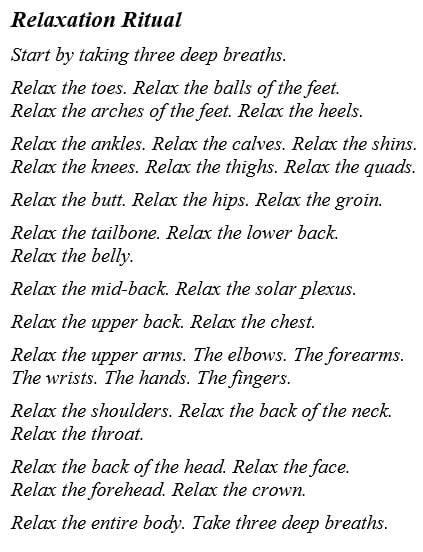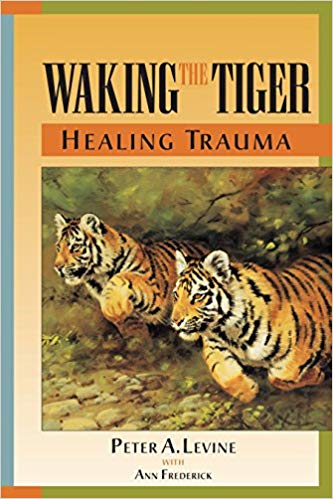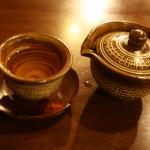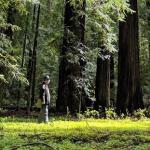Grounding is a skill that should not be ignored. The word itself is magical code for remembering who we are at the deepest level. It is a practice that grows with time, fostering inner balance and eventually combining with other techniques to become a foundation of calmness, awareness, patience, and courage.
Without proper grounding, the magic we perform will be limited. It can be done, but might not be the wisest path forward.
Magic without grounding is like lifting something heavy without proper form. You might have the natural strength to succeed, or you might not. And either way, you are taking a risk of injuring yourself on the way to your goal.
For years, every time I would run across references to “grounding” I would shake my head in confusion. All I knew about it had been shown to me by a college friend. I would do what she had said and pull my spirit back into my body, then continue on with my practices.
Truthfully, I had only the vaguest understanding of what this phrase meant. If you’ve heard “grounding” but don’t feel you understand, you are not alone! These words are used casually, but it is difficult to transmit their meaning and impact in words.
The reason that it is hard to make sense of grounding is that it requires access to parts of the self outside of the everyday mind. This is why there is such benefit to consistent practice.

The first steps to learning magic are about gaining access to your spirit. That requires building a bridge between your everyday mind and your spirit.
We are all born with this “bridge” intact. Differentiating the everyday mind from the spirit (or any other aspect of the self) comes during our early years. It can take a lot of work to rebuild those connections completely, but even the earliest attempts can bring progress.
Start Simple
To begin to learn grounding, the first step is to sit or lie down calmly, with as few external distractions as possible. As with learning the basics of meditation, allow your body to relax, and take a breath. However, as you breathe, follow the breath into the body, allowing you attention to move through each part.
As you move your awareness to each location, you can move through three phases. As you say the words, bring your awareness to that location. Next, feel any coldness, tension, or blocks there. And last, if you find any, release the tension. Then move to the next location.
Moving your awareness through the body generally leaves a feeling of well being and relaxation. If there are areas that are difficult to work with, touch them only lightly. The goal is not to delve into the tension to understand and resolve it, but rather simply to release it.
Personally, I use the following locations in the body in this specific order.(1) It works better to speak the commands out loud, even if you are working by yourself. Below is the pattern I have been using for years.

With each breath, move your attention to a different part of the body, taking note of how it feels. Do not, however, push too hard, too fast with the relaxation. This can lead to difficulties, possibly including panic or lightheadedness. Go gently. It is important to work slowly, over time, to allow your rational mind to incorporate changes as they occur.
It might be easiest to think of this relaxation as a form of working out. No one gets into shape overnight; likewise, it will be necessary to work slowly and methodically to create lasting change in yourself.
Nonetheless, change will come. Your posture will improve, and your body’s movements will become more natural. Work slowly, and enjoy the results.
When the Going Gets Tough…
As you ground into your body, it is likely that memories will rise into your mind. If this happens, neither cling to the memory nor avoid it.
However, if you feel you are not ready to face the memory, and cannot let it simply pass by because of its resonance within your mind, STOP! Ease back on this facet of your training until you find a comfortable (for you) way of dealing with the memory.
This reliving of bodily memories is not a necessary part of training. Attachment to, and dwelling on, such memories is one danger, and a “desire for results” is its inverse. If you find yourself becoming overwhelmed, go slower.
In addition, if you have access to Yoga, T’ai Chi, martial arts, or even dance training, they are excellent methods of working through such obstacles. Physical training of some variety should always be an aspect of any magical training.
…The Wise Get Help
Unprocessed trauma, that which gets trapped, frozen, or stagnated in the body, is not purely a psychological phenomenon. There are physical aspects, as well as mental and spiritual ones.
Realistically, such blocks cannot be entirely handled alone. I you were able to deal with something, you would have. In order to move forward, it is often necessary to get assistance. This can come in a variety of forms of new language to direct guidance and support.
Two excellent books for understanding and addressing such obstacles are Waking: A Memoir of Trauma and Transcendence by Matthew Sanford (2006) and Waking the Tiger: Healing Trauma (Levine & Fredrick, 1997). Both of these books are excellent first places to start when you find yourself unable to progress.

In Waking the Tiger, the authors provide the basic structure of a new approach to healing trauma that is locked in the body. It was the first popular source looking at how the ubiquitous “fight or flight” is missing a third option, “freeze.”
Sanford is a yoga instructor who has been paralyzed from the chest down since he was a young teenager. The book is an exploration of the relationship between the mind and the body.
For those who find themselves challenged by grounding, and more, for those who are most challenged by “being present” in their bodies after experiencing traumas, these books offer glimpses of others’ journeys toward a greater wholeness.
Only the Beginning
It is common for people to feel as if their everyday minds are disconnected from their bodies. My own rather extreme disconnection was the reason that I spent so many years studying and training. The path forward has many twists and turns, but the exercise above is an excellent place to start.
As long as we are disconnected from ourselves, we will feel incomplete. No matter what we accomplish in life, we will be able to actually rest. We will be able to glimpse the possibilities of our whole self, but will be unable to sustain it. That is why mind, body, and spirit all need to be trained.
The exercise above, if practiced diligently, will help build bridges among the mind, body, and spirit. While it is possible to train yourself to connect to only the spirit or body, it is by connecting to both and then balancing all three parts that we can gain direct access to the whole of who we are.
It is only by grounding in who we are and where we are in life that we will be able to progress. Grounding is about accessing the totality of what is real.
Notes
(1) This is an extended version of Donald Michael Kraig’s “Relaxation Ritual” found in chapter one of Modern Magick: Eleven Lessons in the High Magical Arts (1988). One of my passions to study is the overlap between spiritual awareness and the physical body. With that in mind, the specific order of these is not simply random or convenient.
















